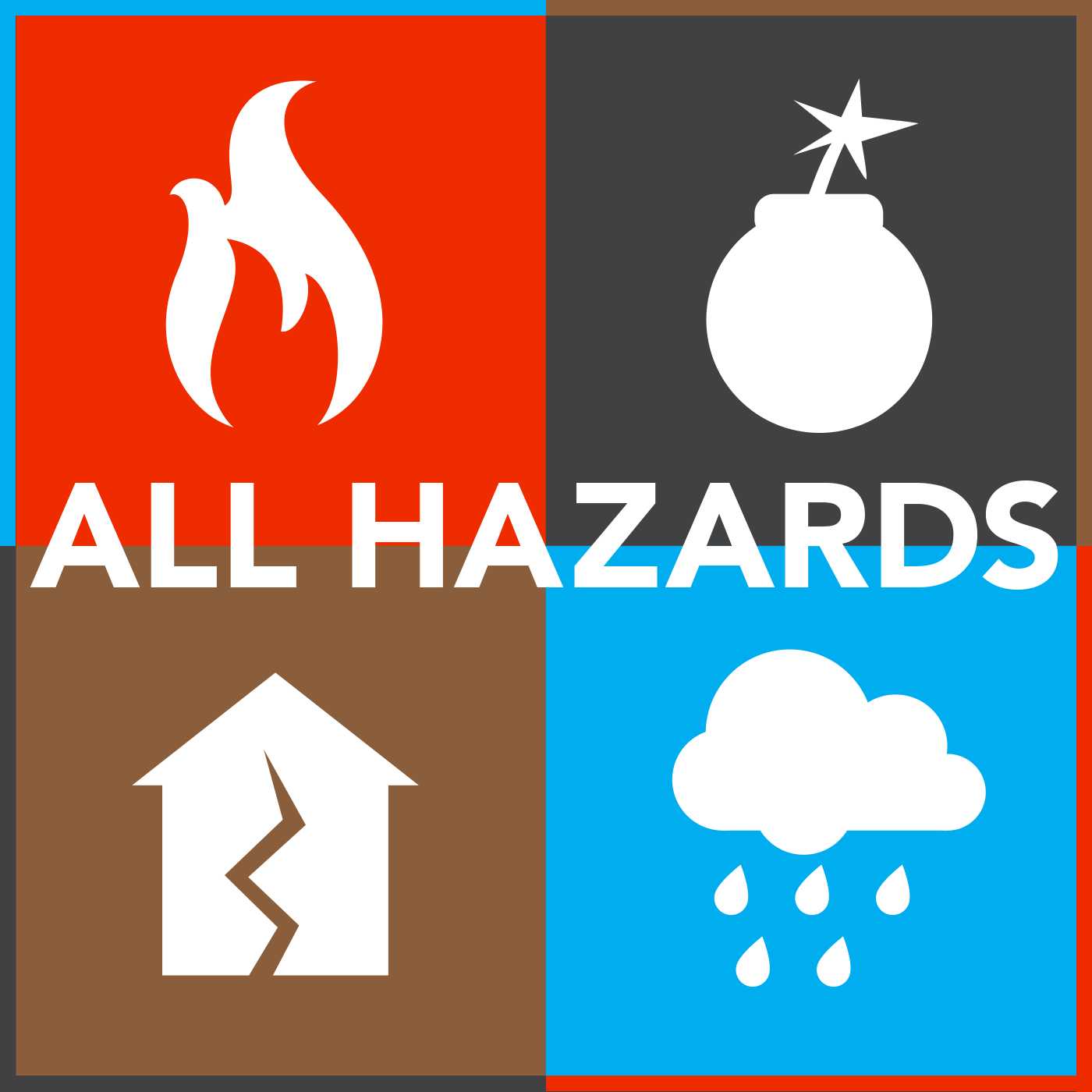Episodes
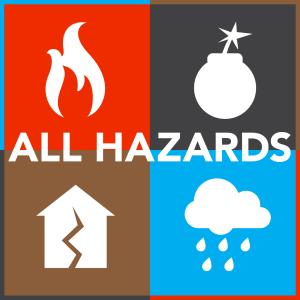
Tuesday Mar 28, 2017
Tsunami Preparedness - Saving Lives and Protecting Property
Tuesday Mar 28, 2017
Tuesday Mar 28, 2017
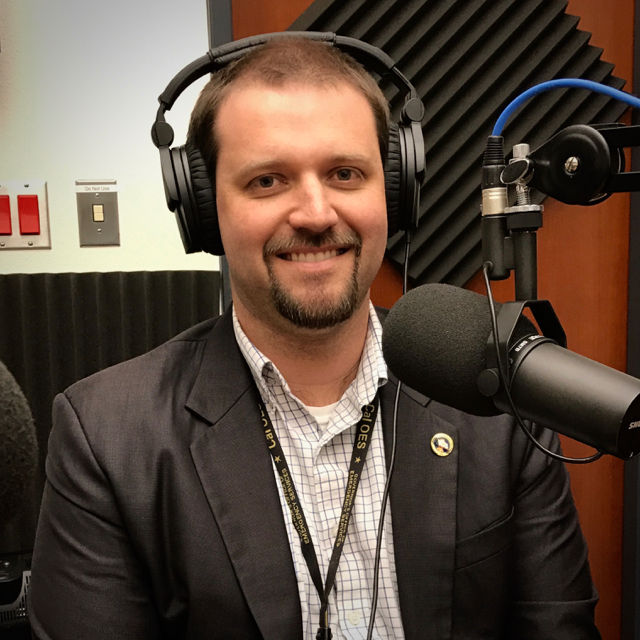
Ryan Arba is the branch chief for the Cal OES Earthquake and Tsunami Program. In this episode, Ryan talks about the program, its federal partner NOAA and the focus of this year’s Tsunami Preparedness Week events.
The California Governor’s Office of Emergency Services, Earthquake, Tsunami and Volcano Program is continuously researching, learning, and collaborating with science, industry, and academic experts to develop and confirm the latest, best available knowledge base to help make California’s residents and visitors safer in the event of tsunamic activity. By mapping potential inundation and evacuation areas, providing assistance in response and evacuation planning, implementing outreach, education and warning signage at the coast, as well as determining ways to improve preparedness and resilience of California’s ports and harbors, our staff strives to ensure everyone on the coast remains safe before, during and after the next tsunami.
Catastrophic tsunamis are rare, we may have a tendency to get complacent and think that one will never happen while we’re at the beach. However, every coastline in the world is vulnerable to a tsunami. Although a tsunami cannot be prevented, you can diminish adverse impacts through community preparedness, timely warnings and effective response.
California’s 2017 Tsunami Preparedness Week is March 27-31. On March 29, Cal OES, the California Geological Survey (CGS) and the NWS will conduct a conference call with emergency managers from counties along the coast to test several aspects of the tsunami response, including the ability of the National Tsunami Warning Center (NTWC) to send and coast emergency organizations to receive specific tsunami alert messages.
During the conference call, representatives from the NTWC, Cal OES and CGS will also test their ability to accurately calculate and verify information contained in draft Tsunami Evacuation Playbooks that will be used by local emergency to determine if an evacuation is necessary and, if show, for how big of an area. The test also allows emergency managers from coastal communities to confirm their ability to receive playbook-related information, test their ability to make decisions regarding evacuation, and as well as to test their abilities to communicate information to port and harbor officials as well as to test their reverse notification and other warning systems reaching people in coastal hazard areas.
Links
http://www.caloes.ca.gov/ICESite/Pages/National-Tsunami-Preparedness-Week.aspx
http://www.caloes.ca.gov/Cal-OES-Divisions/Earthquake-Tsunami-Volcano-Programs

Tuesday Mar 14, 2017
Just Push Publish and Other Great Government Podcasting Advice From Ray Ortega
Tuesday Mar 14, 2017
Tuesday Mar 14, 2017
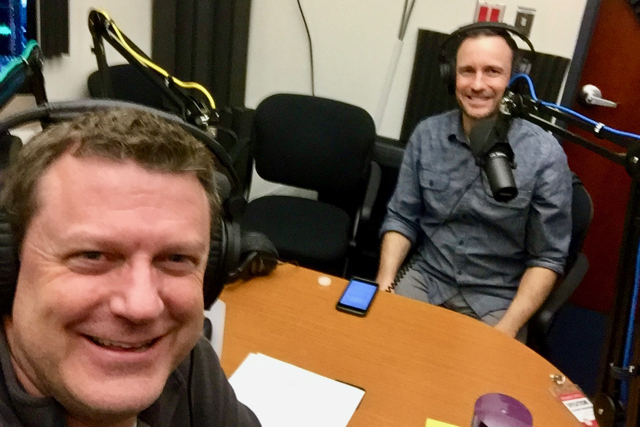
Guest: Ray Ortega; ThePodcastersStudio.com; RayOrtega.com;
Ray Ortega is the host of The Podcasters’ Studio and Podcasters’ Roundtable … both shows are podcasts about podcasting.
He launched his first podcast in 2007 which was called Produce Picker Podcast.
In 2009, he created The Podcasters’ Studio to share what he had learned while producing his first podcast and to teach himself audio-only podcast production. Podcasting quickly became a full-time hobby and eventually his job – more accurately, his dream job.

In this episode of All Hazards we’re going to talk about podcasting in general, podcasting in the government sector and how it might fit in with your office’s public outreach messaging. We’ll offer some tips to get you started if you think your audience might want to listen to what you have to say, how you might improve your existing podcast, and what some of the trends are in podcasting.
Twitter: @PodcastHelper
"YouTuber" at http://youtube.com/rayortega

Tuesday Jan 31, 2017
Cal OES PIOs Talk Disaster Experience, Relationships and More in Team Chat
Tuesday Jan 31, 2017
Tuesday Jan 31, 2017
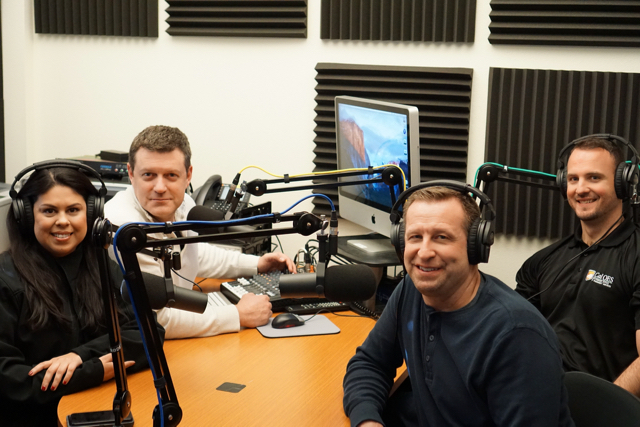
What does a typical day on the job look like for Cal OES public information officer? Well, the answer to that is – there is no typical day. One thing you can count on is that it’s likely there won’t be a press release in draft mode; only for special occasions are press releases written. More often than not, our PIOs are busy creating more engaging forms of communication, from short and longer form videos, to daily blogs to podcasts and social media. Our PIOs also get their hands dirty to get the public and stakeholders the information they need in a more interesting way. They travel by 4-wheel drive, Snow Cat, helicopter and any other mode of transportation to take you to the story and the story makers, and give you the best access for the best perspective. It’s all about transparency and proof of performance and readiness for the tax dollars invested.
So, in this episode, three of our PIOs sit down to talk about what it’s like to be a few of the faces and voices for the Governor’s Office of Emergency Services. Monica Vargas, Robb Mayberry and Jon Gudel have all been involved in a wide range of missions and assignments for Cal OES and are here to share their stories, lessons and tips, all valuable information whether you’re a PIO or not.
Links
http://caloes.ca.gov/Cal-OES-Divisions/News-Media

Monday Jan 16, 2017
Taylor-Made to Advocate for People with Access & Functional Needs
Monday Jan 16, 2017
Monday Jan 16, 2017

In this, the 23rd, episode we sit down with Luis “Vance” Taylor, who is the Chief of the Office of Access and Functional Needs at the Governor's Office of Emergency Services. He is a person who has not let Muscular Dystrophy or his limited mobility slow him down in his personal or professional worlds. You will find out how his determination, experience and mom’s words of wisdom has helped him excel in the world of emergency management.
As chief of the OAFN Vance is responsible for ensuring the needs of individuals with disabilities and persons with access and functional needs are identified before, during and after a disaster and then integrated within the state’s emergency management systems.
Born and raised in the San Francisco Bay Area, Vance was diagnosed with muscular dystrophy as a child and uses a power chair. He has worked in Washington, D.C. as an advisor for two different members of Congress, directed security policy at a national association and been a principal at a top-ranked homeland security and emergency management consulting firm, Catalyst Partners, LLC. Vance is a nationally recognized public speaker and advocate for individuals with disabilities.
Vance has a Master's degree in homeland security from the University of Connecticut and an undergraduate degree from Brigham Young University in communications. He is married to his sweetheart, Casey, and they have two beautiful daughters, Isabelle and Sammy.
Vance and his family live in Rancho Cordova, CA.
Links

Tuesday Dec 13, 2016
Keeping the Deck "STAC-ed" Against Threats in California
Tuesday Dec 13, 2016
Tuesday Dec 13, 2016

This episode brings us to the topic of homeland security in California. The State Threat Assessment System (STAS) describes its mission as Protecting society through shared information and communication. It fosters a collaborative effort to enhance the reporting, tracking, analysis, and assessment of criminal threat information and suspicious activity, produces and shares timely and actionable homeland security information, and enhances the safety of the citizens of California, while rigorously protecting their privacy, civil rights, and civil liberties.
We sit down with Maria Gomez, who is a strategic analyst team manager with the STAC, the State Threat Assessment Center, which is part of the STAS.
STAC
http://www.caloes.ca.gov/cal-oes-divisions/state-threat-assessment-center
STAS
https://calstas.org/default.aspx/MenuItemID/168/MenuGroup/CALSTAS+Home.htm
Fusion Centers
https://www.dhs.gov/fusion-center-success-stories

Tuesday Dec 06, 2016
FEMA's Kelly Hudson: Facilitating Unity Between the States and the Feds
Tuesday Dec 06, 2016
Tuesday Dec 06, 2016
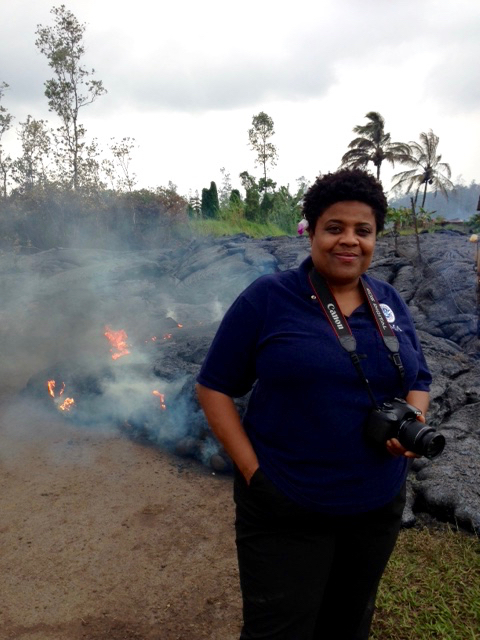
Kelly Hudson is an external affairs officers with FEMA, and is based in Region IX, Oakland, California. She’s worked for FEMA for 12 years, with ten of those in Region IX.
In this episode (#21) she reflects on the many major disasters she’s worked and talks about the challenges of each and lessons learned. She was still a newbie when Hurricane Katrina hit and was dispatched to help with communications as on-scene public information officer. She and her team were escorted by armed guards due to the dangerous nature of angry and desperate locals. She also candidly discusses how, in her eagerness, she got ahead of the messaging curve and told the media too much too soon; that’s a lesson she urges anyone who deals with the media to remember. Kelly also shares her own ways of surviving the chaos of hectic disaster responses, and how it’s important to take care of “Number-1.”

Kelly’s list of major disaster responses are impressive:
External Affairs Officer, Wildfires, Northern California (2015)
External Affairs Officer, Pu'u 'O'O Lava Flow, Hawaii (2014)
External Affairs Officer, Tropical Storm Iselle, Hawaii (2014)
External Affairs Officer, Tropical Storm Halong, Guam (2014)
External Affairs Officer, Severe Storms, American Samoa (2014)
External Affairs Officer, Hurricane Irene (2011)
Deputy External Affairs Officer, Joplin, Mo. tornado (2011)
External Affairs Liaison, Deepwater Horizon Oil Spill (2010)
External Affairs Lead, Tsunami and flooding, American Samoa (2009)
Assistant External Affairs Officer, North Dakota floods (2009)
Deputy External Affairs Officer, Hurricane Ike (2008)
External Affairs Officer, Southern California wildfires (2008)
Executive Officer, Southern California wildfires (2007)
News Desk Lead/Public Information Officer, Hurricane Katrina (2005)
Researcher and Writer/Public Information Officer, New Jersey floods (2005)
Researcher and Writer, Hurricane Ivan (2004)
Links

Tuesday Nov 22, 2016
Radiation Ready and Zealous with Zika in SLO
Tuesday Nov 22, 2016
Tuesday Nov 22, 2016

Episode 20 was recorded on the road in San Luis Obispo during the 2016 Ingestion Pathway Exercises, a multi-day testing of state and local counties by FEMA for nuclear incidents at Diablo Canyon. We talk with Dr. Penny Borenstein, the Health Officer for the County of San Luis Obispo. She talks about how her health department and others might get involved in nuclear incidents immediately following a radiation breach. She also talks about other hot topics in SLO such as antibiotic resistance, secondary hospital-based infections, Zika virus, Valley Fever, drought, and West Nile virus.
In her position, Dr. Borenstein has been a staunch advocate for advancing the public’s health through disease control programs, health education, access to health care, and policy development. One of her first initiatives was a departmental reorganization which resulted in formation of two new divisions – Health Promotion and Health Care Services. The Health Promotion Division created a unified focus on population-based prevention. Staffed primarily at the outset with a small number of health educators and nutritionists working in Tobacco Control, WIC and Childhood Obesity Prevention, the unit now also has programs in Oral Health and Injury Prevention. The division also works extensively on community health improvement through a range of policy initiatives aimed at food systems, climate change, the built environment, and air quality.
Prior to moving to California in 2008, she held several public health leadership positions in the Mid-Atlantic region, and was the founder and Executive Director of Baltimore HealthCare Access, Inc., a non- profit agency devoted to assuring access to health care services for low income persons and special populations. A native New Yorker, Dr. Borenstein received her undergraduate degree from Cornell University and her medical degree from the State University of New York Health Science Center in Syracuse. She received her pediatrics training at the University of Connecticut in Hartford and a Master’s Degree in public health from the Johns Hopkins School of Public Health.
Links
http://www.slocounty.ca.gov/health/publichealth.htm
http://www.cdc.gov/getsmart/community/about/antibiotic-resistance-faqs.html

Tuesday Nov 08, 2016
Preparing for Diablo: The Devil's in the Details
Tuesday Nov 08, 2016
Tuesday Nov 08, 2016
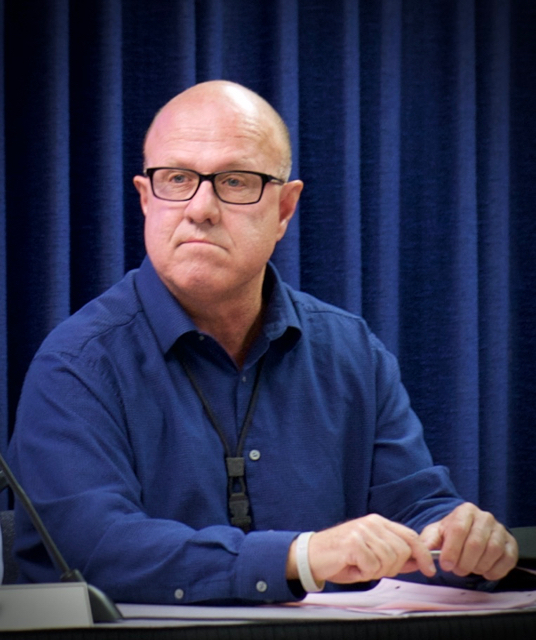
For Episode #19, we traveled to San Luis Obispo County, the home to Diablo Canyon Nuclear Power Plant, where Cal OES as well as many other local, state, and federal agencies were participating in a radiological training exercise. These types of exercises are held every two years and evaluated by the Federal Emergency Management Agency (FEMA). The exercises assist in the development of emergency response plans to ensure that the health and safety of the public is protected in the event of a radiological incident.
Today’s podcast features Ron Alsop, the Emergency Services Manager for San Luis Obispo County Office of Emergency Services (OES). He has been with the county’s OES for 26 years and was previously with Cal Fire for three years. He talks about the importance of having full scales exercises and the unique challenges faced by this region.
Ron also discusses how educating the community about the nuclear power plant and how the Wireless Emergency Alert (WEA) system can assist in the event o fan emergency. He also shares an example how controlling rumors is critical during an incident, especially in this day of social media. He concludes with advice to those responsible for delivering information to the public and how transparency can help build trust.
In addition to ongoing preparedness work that includes nuclear power plant emergency readiness, Ron’s experience includes responding to incidents such as large fires throughout the state, the 6.5 San Simeon earthquake in 2003 in San Luis Obispo County, winter storms, commercial aircraft incidents, including the 2000 Alaska Airlines incident off of Ventura County,hazardous material incidents and he provided Emergency Manager’s Mutual Aid(EMMA) assistance to Cal OES in after the 1994 Northridge earthquake.
Ron served on the California statewide committee that developed the initial EMMA plan and on a statewide task force related to initial Standardized Emergency Management System (SEMS) implementation. Ron is a past chair of the California Operational Area Coalition, which is a coalition of California’s 58 county emergency managers and a former member of the California Association of Public Information Officials.

Links to additional information or resources:
San LuisObispo County Office of Emergency Services
DiabloCanyon Nuclear Power Plant

Tuesday Oct 25, 2016
The Challenge is People, The Reward is People
Tuesday Oct 25, 2016
Tuesday Oct 25, 2016
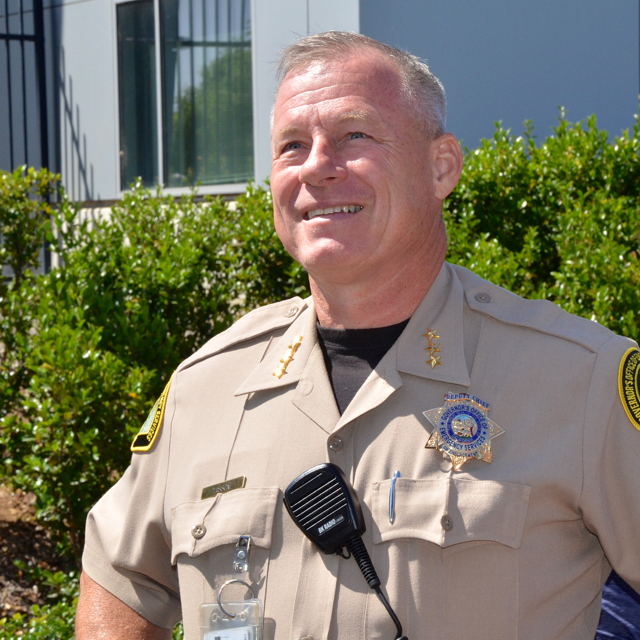
Links

Tuesday Oct 11, 2016
Tuesday Oct 11, 2016

From Left to Right in Photo:
ELI OWEN, Deputy Commander, California State Threat Assessment Center
THOR EDENS, California Cyber Security Integration Center
MICHAEL CREWS, Cal OES Information Security Officer
For this episode we brought three of California’s cybersecurity gurus who talk about some of things you and your agency/company can and should be doing to protect yourself from cybercrime. October is National Cyber Security Awareness Month which is an annual campaign to raise awareness about cybersecurity, but any month, any day is a good time to beef up your own personal protection. We live in a world that is more connected than ever before. The Internet touches almost all aspects of everyone’s daily life, whether we realize it or not. National Cyber Security Awareness Month (NCSAM) is designed to engage and educate public and private sector partners through events and initiatives to raise awareness about cybersecurity, provide them with tools and resources needed to stay safe online, and increase the resiliency of the Nation in the event of a cyber incident. (Source: Dept. of Homeland Security)
California Cybersecurity Integration Center’s (CalCSIC) mission is to reduce the likelihood and severity of cyber incidents that may significantly compromise the security and resilience of California’s economy, its critical infrastructure,and information resources. Cal OES executes this mission together with CDT, CHP and CMD. Cal-CSIC is comprised of two key functional components: (1) cyberthreat analysis; and, (2) dissemination and coordination of incident response and recovery operations (hereinafter “recovery”). Specifically, Cal-CSIC coordinates the identification, prevention or mitigation of cyber threats, as well as coordinates the response to, and recovery from significant cyber incidents. Cal-CSIC coordinates the production of threat assessments for theState, and facilitates analysis and exchange of cyber threat information with all affected organizations.
Terms Used:
Cyber Crime – Crime conducted via the Internet or someother computer network
APT – Advanced Persistent Threat
Social Engineering – A line of attack that relies heavily on humaninteraction and often involves tricking people into breaking normal securityprocedures. (Source: TechTarget)
Spycraft – (aka Tradecraft) Within the intelligencecommunity, this refers to the techniques, methods and technologies used inmodern espionage (spying) and generally, as part of the activity ofintelligence.
Polymorphic – Polymorphic malware is harmful, destructiveor intrusive computer software such as a virus, worm, Trojan or spyware thatconstantly changes ("morphs"), making it difficult to detect withanti-malware programs. Evolution of the malicious code can occur in a varietyof ways such as filename changes, compression and encryption with variablekeys. (Source: TechTarget)
Spear phishing – An email that appears to be from anindividual or business that you know. But it isn't. It's from the same criminalhackers who want your credit card and bank account numbers, passwords, and thefinancial information on your PC.
Ransomware – There are different types of ransomware.However, all of them will prevent you from using your PC normally, and theywill all ask you to do something before you can use your PC. They can targetany PC users, whether it’s a home computer, endpoints in an enterprise network,or servers used by a government agency or healthcare provider.
Ransomware can:
- Prevent you from accessing your computer.
- Encrypt files so you can't use them.
- Stop certain apps from running (like your web browser).
- Ransomware will demand that you pay money (a “ransom”) toget access to your PC or files. We have also seen them make you completesurveys.
- There is no guarantee that paying the fine or doing whatthe ransomware tells you will give access to your PC or files again. (Source:Microsoft)
Links:
Stop Think Connect
Interpol
Ransomware Help
CalCSIC Announcement
https://www.gov.ca.gov/news.php?id=19083
https://itpeernetwork.intel.com/california-to-establish-a-cybersecurity-integration-center/
California Cyber Security

